Feb 20, 2020 | Climate, Energy & Climate, Women in Science, Young Scientists
By Chibulu Luo, PhD student at the University of Toronto (Civil Engineering) and 2016 Young Scientists Summer Program (YSSP) participant.
Luo’s recent publication in the Journal of Cleaner Production considers the needs of the poorest and most vulnerable communities when exploring policy insights for Dar es Salaam’s energy transition.
Global discourse on sustainability rarely focuses on the Africa region as a key player in the global transition towards a cleaner low-carbon energy future. Filling this critical gap in the research is what has stimulated my doctoral studies.
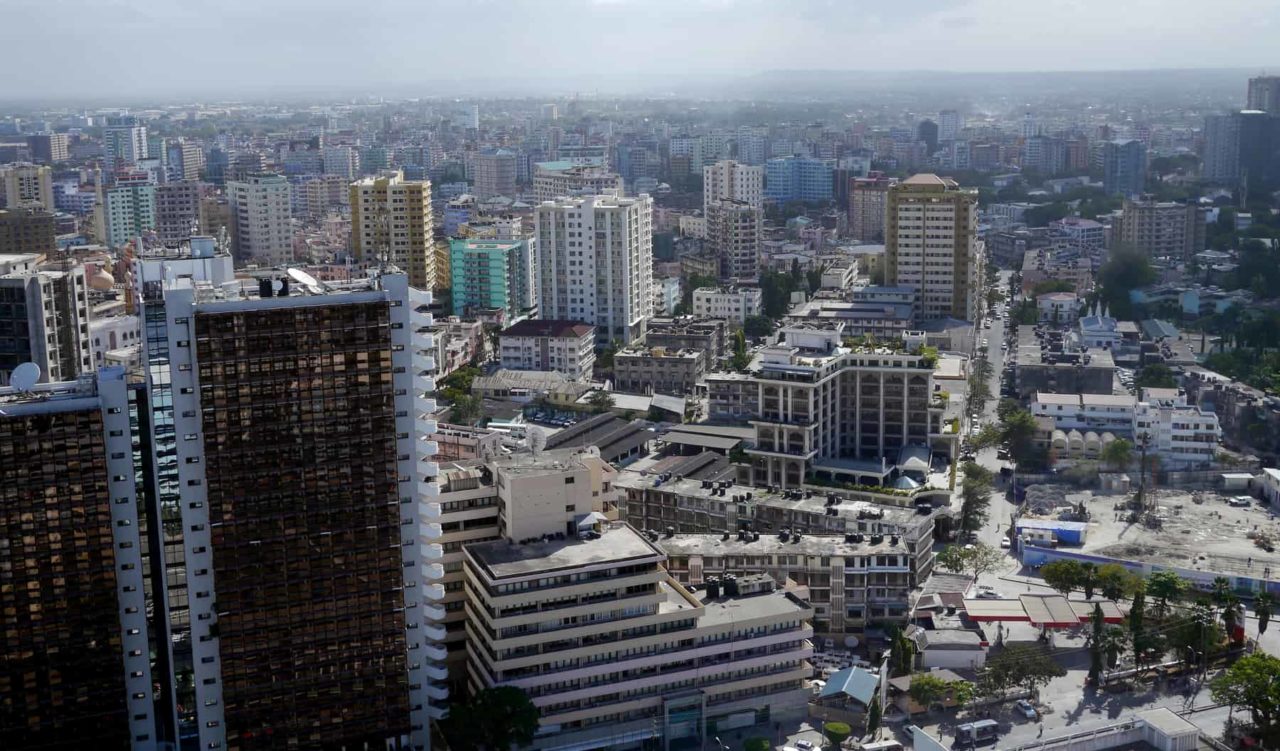
Dar es Salaam © Timwege | Dreamstime
According to a recent report from the International Energy Agency, the Africa region contributed only 3.7% towards global energy-related GHG emissions in 2018, which perhaps explains why the region has remained largely ignored in current research on energy. However, with colleagues at the University of Toronto and Ontario Tech University, I assert that the growth of large cities such as Dar es Salaam should be critically considered in global efforts on climate change mitigation. My recently published paper estimates to the year 2050, the potential changes in residential energy use and GHG emissions in Dar es Salaam, among Africa’s most populous and fastest-growing cities. Like many African cities,contributes little to global GHG emissions; however, our paper projects a substantial increase in future emissions by the year 2050 – up to 4 to 24 times– which is quite overwhelming. According to our findings, this jump in emissions is due to a higher urban population in 2050 (expected to triple from 5 million in 2015, to as much as 16 million in 2050), and increased energy access and electricity consumption.
In developing these future estimates, we used the Shared-Socio-Economic Pathways (SSPs), developed by IIASA researchers, as a guiding narrative. While there may be some uncertainties with projecting GHG emissions pathways several years into the future, our findings could derive insights to the emissions pathways of other large African cities, and the critical role that these cities can play in global efforts to achieve the 1.5-degree, or even, 2-degree global warming target.

© Chibulu Luo
I first heard about the SSPs as a participant in the IIASA YSSP in 2016; this period was a tremendous time of growth and reflection in terms of my research direction. The opportunity to work amongst such a talented group of scientists in a collaborative environment and on issues that are globally relevant was an unforgettable experience. I especially enjoyed working with colleagues in the IIASA Risk and Resilience Program, where some of my early research ideas were formulated. At that time, I focused largely on resilience measures for infrastructure development in African cities, including Dar es Salaam.
Note: This article gives the views of the author, and not the position of the Nexus blog, nor of the International Institute for Applied Systems Analysis.
More updates from IIASA alumni or information on the IIASA network may be found here.
Feb 5, 2020 | Alumni, Climate Change, Science and Policy, Women in Science, Young Scientists
By Leila Niamir, post-doctoral researcher at the Mercator Research Institute on Global Commons and Climate Change (MCC), Germany and IIASA YSSP alumna.

© Cienpies Design Illustrations | Dreamstime
Weather patterns and events are changing and becoming more extreme, sea levels are rising, and greenhouse gas emissions are now at their highest levels in history[1]. Climate change is affecting every individual in every city on every continent. It imposes adverse impact on people, communities, and countries, disrupting regional and national economies.
Climate change mitigation refers to efforts to reduce or prevent emissions of greenhouse gases to limit the magnitude of long-term climate change. Human consumption, in combination with a growing population, contributes to climate change by increasing the rate of greenhouse gas emissions. Over the last decade, instigated by the Paris Agreement, the efforts to limit global warming have been expanding. Significant attention is being devoted to new energy technologies on both the production and consumption sides, however, changes in individual behavior and management practices as part of the mitigation strategy are often neglected[2]. This might derive from the complex nature of human which makes explaining and affecting human behavior a difficult task. As a result, quantitative tools to assess household emissions, considering the diversity of behaviors and a variety of psychological and social factors influencing them beyond purely economic considerations, are scarce. Policymakers would benefit from reliable decision supporting tools that explore the interaction of economic decision-making and behavioral heterogeneity in households behavioral and lifestyle changes, when testing climate mitigation policies (e.g. carbon pricing, subsidies)[3].
To address this issue, during my PhD research I studied the potential of behavioral changes among heterogeneous households regarding energy use and their role in mitigating climate change. By designing and conducting comprehensive household surveys, it was explored how individuals choose to change their energy behaviour and what factors trigger or inhibit these choices[4]. Decision support tools are designed to study large-scale regional effects of individual actions, and to explore how they may change over time and space. The model explicitly treats behavioral triggers and barriers at the individual level, assuming that energy use decision making is a multi-stage process. This theoretically and empirically grounded simulation model offers policymakers ways to explore various policy portfolios by running diverse micro and macro scenarios.
This model was further developed during my collaboration with the IIASA the Young Scientists Summer Program (YSSP), to estimate macro impacts of individuals’ energy behavioral changes on carbon emissions[5]. Within this research, we illustrate that individual energy behavior, especially when amplified through social context, shapes energy demand and, consequently, carbon emissions. Our results show that residential energy demand is strongly linked to personal and social norms. When assessing the cumulative impacts of these behavioral processes, we quantify individual and combined effects of social dynamics and of carbon pricing on individual energy efficiency and on the aggregated regional energy demand and emissions.
In summary, mitigating climate change requires massive worldwide efforts and strong involvement of regions, cities, businesses and individuals, in addition to the commitments at the national levels. We should always keep in mind that every single behavior matters. In the transition to a sustainable and resilient society, we –as individuals- are more than just consumers.
Note: This article gives the views of the author, and not the position of the Nexus blog, nor of the International Institute for Applied Systems Analysis.
[1] Climate Action– United Nations Sustainable Development Goals https://www.un.org/sustainabledevelopment/climate-change/
[2] Creutzig, F., et al. (2018). Towards demand-side solutions for mitigating climate change. Nature Climate Change 8, 268-271; Grubler, A., et al. (2018). A low energy demand scenario for meeting the 1.5 degrees C target and sustainable development goals without negative emission technologies. Nature Energy 3, 515-527; Creutzig, F., et al. (2016). Beyond Technology: Demand-Side Solutions for Climate Change Mitigation. Annual Review of Environment and Resources, Vol 41 41, 173-198
[3] Niamir, L. (2019). Behavioural Climate Change Mitigation: from individual energy choices to demand-side potential (University of Twente); Creutzig, F., et al. (2018). Towards demand-side solutions for mitigating climate change. Nature Climate Change 8, 268-271; Niamir, L., et al. (2018). Transition to low-carbon economy: Assessing cumulative impacts of individual behavioural changes. Energy Policy, 118; Stern N. Economics: Current climate models are grossly misleading. Nature 530(7591):407–9.
[4] Niamir, L. et al. (2020). Demand-side solutions for climate mitigation: Bottom-up drivers of household energy behaviour change in the Netherlands and Spain. Energy Research & Social Science, 62, 101356.
[5] The results of this collaboration was presented at Impacts World 2017 and won the best prize, and also published at Climatic Change Journal.
Jan 9, 2020 | Ecosystems, IIASA Network, Postdoc
By: Florian Hofhansl, postdoc in the IIASA Ecosystems Services and Management and Evolution and Ecology Programs
Florian Hofhansl shares his experience on presenting the wildfire climate impacts and adaptation model (FLAM) at the Google Exhibition Booth at the 2019 American Geosciences Union meeting held in San Francisco 9-13 December.
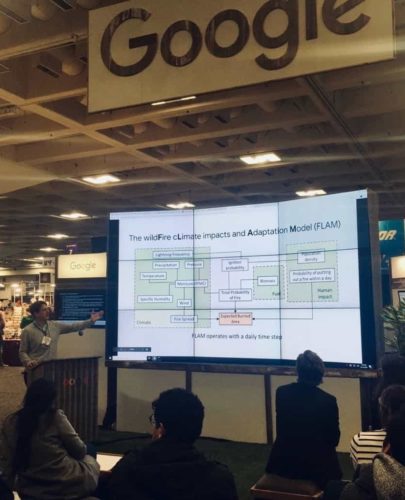
© Florian Hofhansl | Florian presenting the wildfire climate impacts and adaptation model (FLAM) at the Google Exhibit Booth.
The American Geosciences Union (AGU) Fall Meeting is the largest international Earth and space science meeting in the world. AGU is a great place to reconnect with colleagues as well as to build-up new professional relationships. The 2019 conference marked its Centennial in San Francisco, the home of the AGU Fall Meeting for more than 40 years, and thus I gladly took the offer to give a presentation about FLAM at the Google Exhibit Booth.
It was an honor to represent IIASA by presenting FLAM and discussing its implementation on the Google Earth Engine platform with experts face-to-face on-site. Right after the presentation I ran into a former YSSPer Sarath Guttikunda, who indicated that his experience in the IIASA Young Scientists Summer Program (YSSP) had a profound influence on his professional and personal life.
Another highlight of this year’s centennial conference edition was a presentation by Cesar Terrer, winner of the Peccei Award with Honors from the 2016 YSSP, who was invited to present a young scientists view of the future. His talk entitled “The future of earth vegetation under rising CO2” was featured in a special lighting talk session.
I have been attending the Fall Meeting since 2012 and will continue to attend this meeting for the foreseeable future as it is a great place to network with colleagues and embrace the joy of science with the community. Over the years, I keep on being inspired by other researchers filled with new perspectives, and have participated in scientific discussions that we hope will make our planet more sustainable.
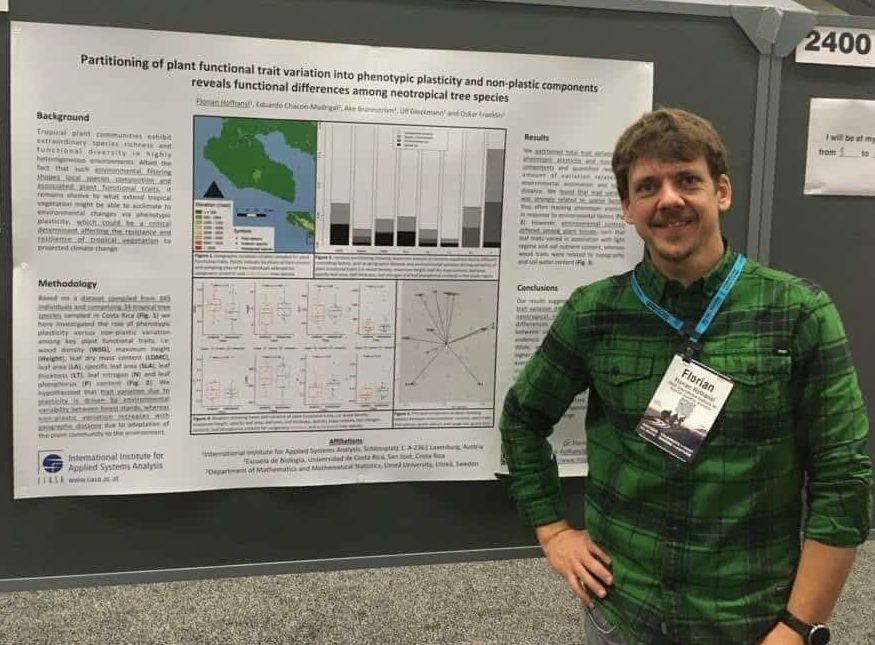
© Florian Hofhansl | Florian presenting a poster about tropical plant functional traits at AGU19.
More about Florian Hofhansl’s research can be found here: https://tropicalbio.me/blog/.
Note: This article gives the views of the author, and not the position of the Nexus blog, nor of the International Institute for Applied Systems Analysis.
Nov 18, 2019 | IIASA Network, South Africa, Women in Science
Mary Scholes has been serving on the IIASA Science Advisory Committee (SAC) since 2011 and was appointed as Chair in 2014. She discusses her views of SAC in this interview with Monika Bauer, IIASA Network and Alumni Officer.
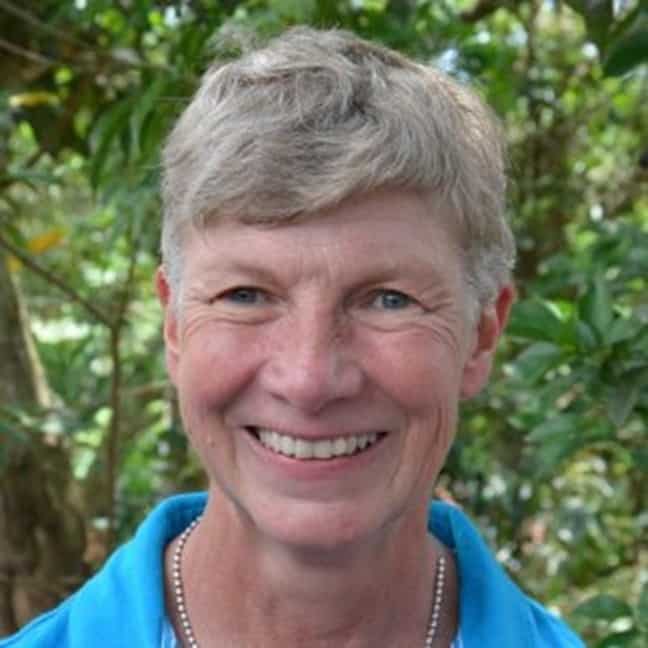
Mary Scholes
Tell us about your journey as a member of SAC.
It’s been a very interesting journey for me. When I was first asked to join SAC, I declined. Over time, I found that the institute changed to look at the quality of the research in the programs, and it was at this point that I said I would become part of the committee. I soon realized that I didn’t really understand the overarching top down role that IIASA Council played.
It was very interesting. The first two to three years was a learning curve working on communicating with the IIASA Council. The institute was conducting good science, and we didn’t want that to be overlooked in any way. We re-wrote the terms of reference for SAC, focusing on the engagement between what SAC does during the year and how that is communicated to Council. From that point on, it was always on the agenda, documents were always acknowledged, and there was always follow up. It my opinion, it changed how SAC functioned.
In 2017, the institute started an institutional review process, and I represented SAC on the taskforce that was assembled to support this effort. Throughout the process, in my opinion, it came out quite clearly, that SAC needs to play a much more engaged role with the Council Program Committee, and that the Program Committee should ensure that SAC’s voice reaches the Council. In the past, there was a quite strong responsibility on the SAC Chair, to make sure the voice of the committee was heard, and this process resolved this.
What will happen next, I think, is that SAC will interact much more closely with the new Deputy Director General for Science (DDGS), who will then take the views or recommendations of SAC to Council. It would be advantageous to still have the SAC Chair invited to IIASA Council meetings to ensure information is conveyed or to answer any follow up questions. I would also suggest that SAC continues in the role of an advisory board to IIASA. I believe any good international science institution, anywhere in the world, should have an external, neutral, excellent research advisory body.
How do you see SAC developing as you step down at the end of this year?
First, that SAC continues. Second, that the Chairperson interacts frequently with the new DDGS. Third, that the DDGS communicates SAC’s feedback to Council, and to ensure that this is the voice of SAC, the Chairperson should be invited to that particular section of the Council meetings. For this, the terms of reference would however need to be revisited.
How is this different from the current situation?
At the moment, SAC is meant to only look backwards. I plan to challenge this, so that it can be raised in 2020 because, in my opinion, this is the best committee to do an independent horizon scanning exercise. Internal researchers can do a horizon scanning exercise from their perspective, and SAC add expertise from other areas and regions. Therefore, I believe SAC needs to be given the space of being retrospective as well as the space to look forward and to take those ideas to the DDG of Science.
Those are the three critical roles I think that SAC needs to take in the future. If this is done, it would greatly benefit the scientific governance of the institute.
SAC members can serve a maximum of six years. This is a good decision. A new Chairperson will be a new beginning, with these principle guidelines providing a foundation.
What do you feel are the main takeaways from SAC’s recent report to the IIASA Council?
First, SAC is very pleased about the new DDGS position, as we feel it’s important to have someone who can solely focus on driving the science agenda rather than also running the entire institution.
Second, it’s important for the strategic plan to be agile. I think the way the new strategic plan needs to be developed is probably in phases. For example, instead of designing a ten-year plan, do a three-year portion and then a five-year portion; there could also be staggered overlaps. This way the institute is much more agile while focusing on the results rather than where to allocate the budget, and it allows flexibility for the institution to change as research progresses or is completed. SAC would like to see an agile research strategy that also takes into account the fundamentals of knowledge versus what can be done with iterative machine learning.
Lastly, there was concern about the processes regarding recent changes at the institute. This is a hard issue to handle, and there are ways of potentially managing it better.
What has left the greatest impression on you during your time on SAC?
I think it’s critical how IIASA moves forward with its National Member Organizations (NMOs), how governments stay engaged, and how these relationships work in terms of a reciprocal relationship.
My experiences in South Africa have been closely tied to the Southern African Systems Analysis Centre (SASAC), an initiative organized by IIASA and the South African NMO. At the moment the program is stagnant, and we’re hoping the materials we produced for SASAC will find a new avenue for teaching a new cohort as there are absolutely wonderful examples of success stories.
After completing the three-week SASAC High-level Capacity Strengthening Program, participants would update their CVs and quickly be promoted to higher positions at various universities and institutions. Individuals from other African countries would come to South Africa because there were no opportunities in their home countries, complete the program, and then be promoted into positions at universities back home. Another example from the last course in 2017: I had 16 participants and already 13 manuscripts have been published. That’s a huge return on investment. The program really worked, and we would obviously like to see the program continue. Perhaps the gentlest way would be to have a committed postdoc come to IIASA and then go back to South Africa and drive a new program.
Mary Scholes will be stepping down as SAC Chair in December 2019 and will continue serving on the South African NMO Committee for IIASA.
Notes:
More updates from IIASA alumni or information on the IIASA network may be found here.
This article gives the views of the author, and not the position of the Nexus blog, nor of the International Institute for Applied Systems Analysis.
Oct 21, 2019 | Alumni, IIASA Network, Netherlands, Systems Analysis
Leen Hordijk has served in the capacity of project leader, Council member, and director of IIASA. He is currently professor emeritus at Wageningen University and special adviser to the Competence Centre on Modeling at the European Commission’s Joint Research Centre (JRC). He was recently interviewed by IIASA Network and Alumni officer, Monika Bauer.
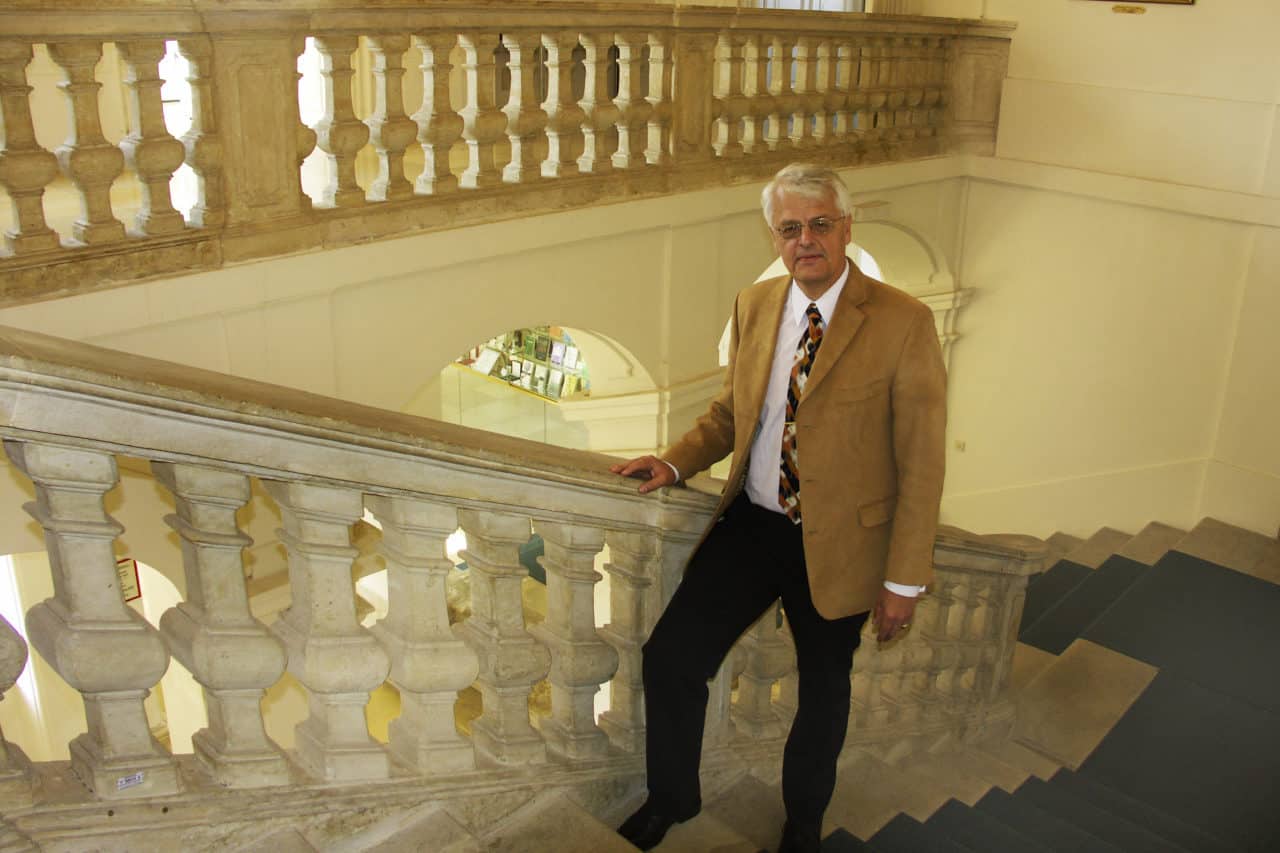
Leen Hordijk at IIASA in 2006.
In 2007, you wrote an Options article on what systems analysis is in which you stated that systems analysis at IIASA is making an important—even essential—contribution to solving some of the world’s most complex problems. Is the role of systems analysis even more important today, and if so why?
In today’s world, it is indeed more important. First and foremost, the world is more complex than it was 20 years ago. Internet, social media, and the accessibility of transport options make the world more connected and thus more complex. Systems analysis can assist in disentangling the complexities and in trying to quantify where possible. Science is frequently under attack by interest groups, climate change deniers, and even some governments. It is therefore even more important to have an international, multidisciplinary, and multi-cultural institute like IIASA to bring scientific results to policymakers and society. Impartiality and knowledgeability are in the institute’s genes. The world notices this in scientific contributions by IIASA to policy debates in energy, biodiversity, climate change, disaster management, air quality, aging population issues, water management, and technology development.
In my personal development, IIASA has played a key role since my first visit in 1979 when I attended a regional economics conference. “IIASA gets into your blood”, as one of our sons said when I was thinking about applying for the IIASA directorship back in 2001. That is so true for many alumni.
What are your reflections on your time as IIASA Director General?
When I arrived as director in 2002, the challenge was twofold. First, I had to deal with financial issues, as two major members of IIASA had not lived up to their commitments, while expenditures had not been reduced. Second, some ten years after the end of the Cold War, the IIASA membership structure had not changed. The first problem was solved through a thorough 25% expenditure reduction plan and a re-engagement of said members. IIASA staff realized that cuts were necessary, and they were very engaged in finding solutions. The re-engagement of member countries went quickly because of the involvement of Austrian government officials, in particular Raoul Kneucker. The second issue took more time: expanding membership for IIASA to become a global institute rather than an East-West one. With China already on board when I arrived, we expanded membership with Egypt, India, Pakistan, South Africa, and the Republic of Korea.
In terms of content and scientific quality, I was very happy to find an excellent staff. What surprised me was that the number of social scientists (including economists) was higher than I had expected, and the total sum of external financing was quite low. In the following years, most programs became very successful at acquiring projects funded by the European Research Council and various Directorates-General of the European Commission.
Today, IIASA is a major player in terms of providing impartial scientific input in the analysis of many global challenges, such as energy, air quality and climate change, sustainable development, disaster risks, ecosystem services, demography, and technological transitions. IIASA is often a leading institute in signaling global trends and changes and, very importantly, uses its broad systems analytic and modeling capacity to quantify such changes and bring the results to policy fora.
In your opinion, how has the Dutch community benefited from the IIASA network?
It is always very hard to point at such benefits, because more often than not, they cannot be linked to single causes. That aside, I think that the Netherlands’ strength in systems analysis for environment, climate, and energy can, for a substantial part, be linked to leading scientists who spent time at IIASA and/or are active participants in IIASA networks. Last year I came across a nice example when I had a temporary assignment as chief scientist at PBL, the Netherlands Environmental Assessment Agency. In that year, PBL was heavily involved in analyzing a draft national climate agreement for the Dutch government. I met two key scientists in that team who I knew as Young Scientists Summer Program (YSSP) participants during my time as director of IIASA. It was very exciting to notice how they had grown since their time as YSSPers and became essential in the PBL team.
Being part of global scientific networks, gaining experience in advanced interdisciplinary work, and, last but not least, the YSSP, are specific benefits all member countries receive from being a part of IIASA. IIASA was not founded for the benefit of single countries – it is the global good that the institute tries to understand and serve.
I have also personally benefited from being a part of the IIASA network. When I left IIASA in May 2008, I became director of the Institute for Environment and Sustainability of the JRC in Ispra, Italy. IIASA and the JRC have become close collaborators in various fields of research.
More updates from IIASA alumni or information on the IIASA network may be found here.
Note: This article gives the views of the author, and not the position of the Nexus blog, nor of the International Institute for Applied Systems Analysis.








You must be logged in to post a comment.